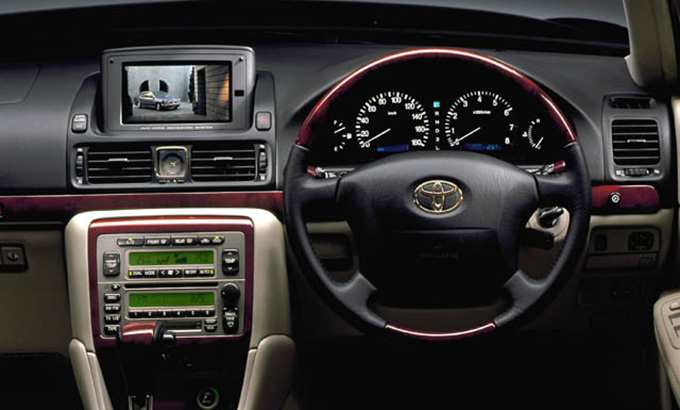
Toyota had reached a cumulative vehicle production in of 100 Million units. To celebrate this, the company launched a very special car at the end of the year 2000. It was called the Toyota Origin, and had the exterior characteristics of a classic car with modern technology under the skin.
The XG10 version of the Toyota Progres was used as a base for the Origin. As such the first few characters of the VIN were identical. The same platform was also used for the Lexus IS at the time. While the underpinnings of the Origin were based on an existing model, the bodywork was completely new. Design elements of the first Toyota Crown ensured a classical look. Craftsmanship was one of the key pillars of the projects, and a lot of attention was dedicated to manufacturing of this special model.

Assembled on the low production volume line of the Toyota Century, the Origin was build by some of the most skilled craftsman of Toyota. A special technique was used to join the complex shaped front fender and panel above the front grille. Even the seam was not visible anymore after painting. Speaking of painting, the Origin received the highest quality paint job available within Toyota. Like on the Century, the paint was smoothened by hand before the final layer to give that extra shine.

Instead of regular rear doors, the Origin got the “suicide doors” which were hinged on the rear. Opening angle was almost 90 degrees meaning that passengers could easily enter into the rear of the vehicle. From the side you could also see the large rear window wrapping around the C-pillar, giving the car that classical look. The rear fenders are wing shaped with the rear lights placed at the end of them.

The overall interior design was common with that of the Progres. A new element in the interior was the combimeter, which projected light on the dials to create a three-dimensional feel. For the time, the car already had some advanced technology such as adaptive radar cruise control and a communication channel between the navigation system and the transmission, so the car could anticipate for upcoming corners by shifting down a gear in conjunction with braking.

As the Progres was already equipped with a very suitable engine and transmission for a luxury car, Toyota did not bother to much changing it and as such the drivetrain was carried over. The normally aspirated 2JZ engine, yes the one also found in the Supra MK IV, produced 215 horsepower and 294 Nm of torque. With this torque, a 4-speed automatic transmission was sufficient to get the 1560 kilogram car get along with traffic in any gear. Double wishbone suspension was used both on the front and the rear to give a comfortable yet stable ride.

While assembly of the Progres was done in the Motomachi factory in Toyota-shi, the Origin was assembled in the Kanto Auto Works (now Toyota Motor East Japan) Higashi Fuji factory which also hosted the Century production line. A lot of craftmanship means that usually a high production volume is not feasible. Same for the Origin, as Toyota announced that only around 1000 units would be sold. It is said that just over 1000 units have been produced. The exclusivity, unique development and craftmanship production work meant that the car did not come in cheap with a price of 7 Million Yen.
Click on the picture below to see more details of the Toyota Origin such as weight, new price and equipment in the Goo-net.com catalog.

